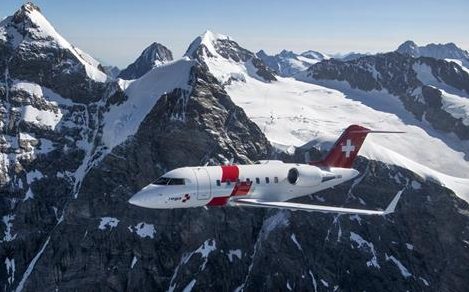FIVE TRENDS SHAPING PRIVATE AVIATION
After a year of economic disruptions with the pandemic forcing companies to adjust their needs and trends to match new customer behaviour, what does the future have in store for the business aviation sector? Aziz Ghorbani, General Manager, Delta World Charter identifies the current trends and predicts the changes in private aviation in the year to come.
The last 12 months have been incredibly challenging for the entire travel and tourism industry. While trade tensions, geopolitical issues and the COVID-19 pandemic made for a rather volatile landscape in global aviation for the past year, business aviation has in many ways remained relatively resilient to external factors that would ordinarily hamper full-service and low-cost airlines. To that end, charter brokers and service providers, such as Delta World Charter and others, are seeing new passengers looking for alternative ways to travel to avoid busy gateways and commercial airlines for secure, safer direct-point services. We are also seeing the providing companies change their operations in order to grab whatever business is to be had in this evolving market.

Diversification in services
Private jet operators and brokers have actively sought ways to diversify the use of business jets, as demand dropped in traditional markets. Air medical services have now expanded to a solid business line, as a result of increasing demand from hospitals and insurance companies. Freight transport and business continuity operations also hold possibilities to broaden the scope of services from private jet providers.
With commercial aviation still to reach pre-pandemic levels, it is anticipated that passenger planes will be redeployed and converted to fly on cargo missions to transport the COVID-19 vaccines in the months ahead – ensuring the vaccines reach 200 countries around the world. Air charter service providers such as DWC have also handled requests for transportation of temperature-sensitive cargoes; ensuring that operators strictly comply with IATA’s Temperature Control Regulations (TCR). And throughout the pandemic, DWC and other operators have transported not just stranded travelers around the world, but also millions of pieces of PPE and masks to where they are most needed.
Connecting routes without commercial aviation
Private aviation companies will also be partnering with commercial airlines to help secure a steady demand for flights to remote terminals. Furthermore, private jet charter brokers can generate tailored deals for clients interested in these remote routes. Simple market research can provide the routes and estimated number of passengers willing to pay more for a direct private flight, instead of boarding two connecting planes, to save time and avoid extended contact with other travellers in international hubs.
Technology is also enabling the ‘uberisation’ of private aviation – a trend that is expected to grow in the months to come. Years before Uber disrupted private transportation, private aviation companies had introduced jet sharing programmes so private fliers could effectively ‘carpool’. Fractional ownership of private jets and private charters allow owners of private jets to let others use their aircraft when they are not flying in them. With the fractional model, up to 16 different people can share one jet.
We have also seen the explosion of growth in direct charter through online companies, where passengers pay for hours flown at an all-inclusive rate, often without ferry positioning costs.

Minimising Costs
Elastic demand, lower costs for fuel and insurance, and the entry of new players into the market who have fewer overhead costs and are able to offer cheaper prices, are some of the factors that have triggered the need for cost-cutting in private aviation. Many of these factors are anticipated to continue to have an impact in 2021.
Private aviation will begin to place greater emphasis on being more efficient in spare parts sourcing and maintenance, pursuing fleet commonality and thoroughly selecting cost-efficient suppliers, such as FBOs and catering companies.
Health and safety considerations
Time and convenience have traditionally been the prime considerations for chartering flights. The pandemic, however, reinforced the security and safety aspect of flying private. Commercial flights have on average around 700 points of contact with people and objects, according to research by McKinsey. On a private flight this reduces to 20 or 30, and can even be minimised further. Unlike private charters, passengers booked on scheduled flights have no control over who they fly with. Private aviation clients have access to dedicated FBOs, immediate lounge transfers and do not have to face red tape. For passengers at risk from coronavirus, these factors make private aviation much more attractive.

Greener aviation
Private aviation has been working on green solutions, including sustainable fuel alternatives, and not just recently. A number of private aviation companies already offer carbon offset programmes. Sustainable fuels have been tested for many years now and have shown to have no detrimental effect on the performance or longevity of the engines. They are now available at FBOs around the world.
As the aviation sector works towards reducing carbon emissions, renewal of air fleets, better fuels and advanced technologies will dramatically improve fuel efficiency and reduce carbon emissions, resulting in cost savings.
It remains to be seen if the new clients attracted to private aviation because of the pandemic will remain within the sector, and become owners of business jets in the future. Hopefully some will, as it is a hard thing to give up, once experienced. However, for now, this is a part of the aviation industry that is battling through and making the most of every opportunity.








